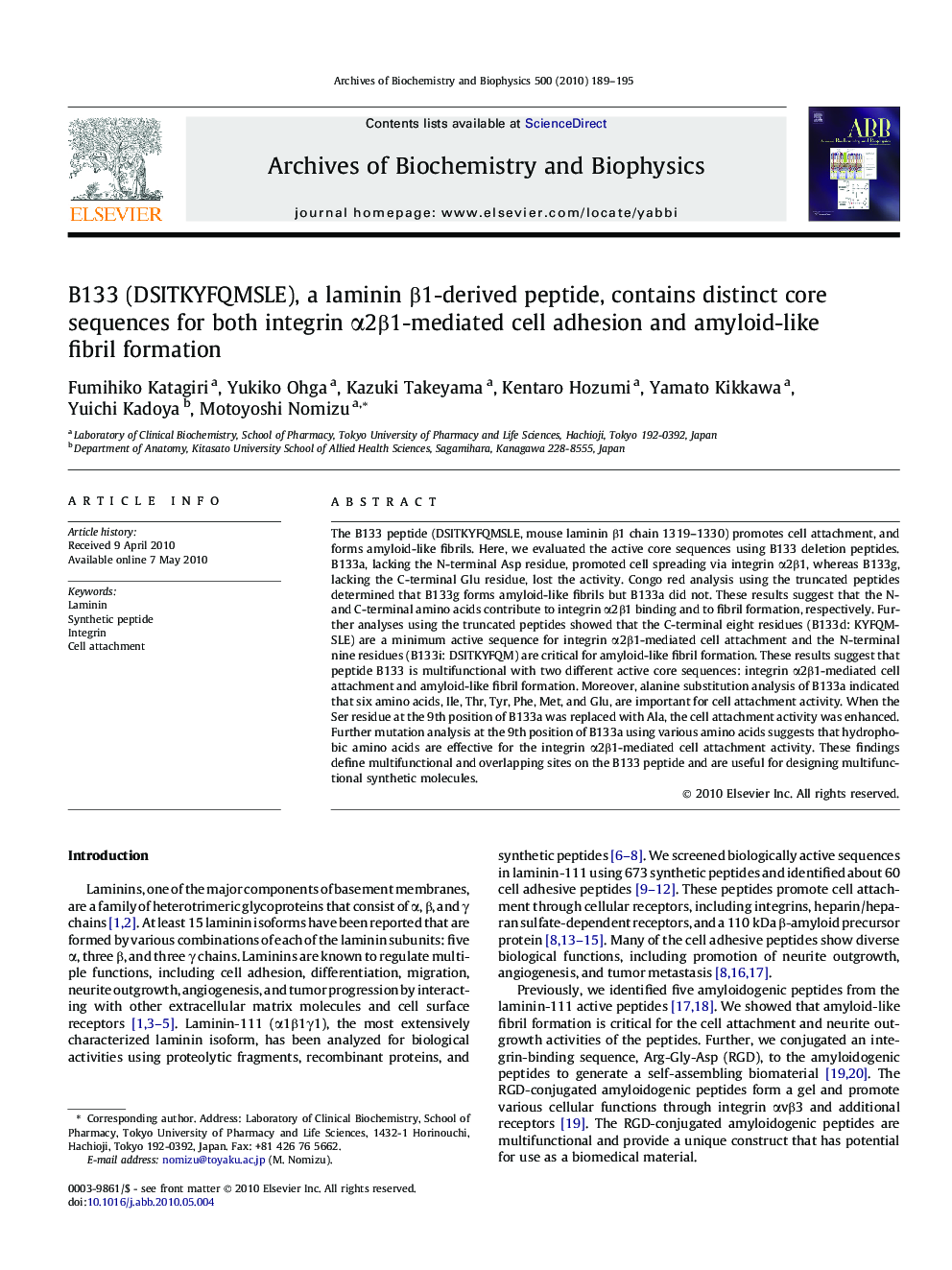| Article ID | Journal | Published Year | Pages | File Type |
|---|---|---|---|---|
| 1926028 | Archives of Biochemistry and Biophysics | 2010 | 7 Pages |
The B133 peptide (DSITKYFQMSLE, mouse laminin β1 chain 1319–1330) promotes cell attachment, and forms amyloid-like fibrils. Here, we evaluated the active core sequences using B133 deletion peptides. B133a, lacking the N-terminal Asp residue, promoted cell spreading via integrin α2β1, whereas B133g, lacking the C-terminal Glu residue, lost the activity. Congo red analysis using the truncated peptides determined that B133g forms amyloid-like fibrils but B133a did not. These results suggest that the N- and C-terminal amino acids contribute to integrin α2β1 binding and to fibril formation, respectively. Further analyses using the truncated peptides showed that the C-terminal eight residues (B133d: KYFQMSLE) are a minimum active sequence for integrin α2β1-mediated cell attachment and the N-terminal nine residues (B133i: DSITKYFQM) are critical for amyloid-like fibril formation. These results suggest that peptide B133 is multifunctional with two different active core sequences: integrin α2β1-mediated cell attachment and amyloid-like fibril formation. Moreover, alanine substitution analysis of B133a indicated that six amino acids, Ile, Thr, Tyr, Phe, Met, and Glu, are important for cell attachment activity. When the Ser residue at the 9th position of B133a was replaced with Ala, the cell attachment activity was enhanced. Further mutation analysis at the 9th position of B133a using various amino acids suggests that hydrophobic amino acids are effective for the integrin α2β1-mediated cell attachment activity. These findings define multifunctional and overlapping sites on the B133 peptide and are useful for designing multifunctional synthetic molecules.
